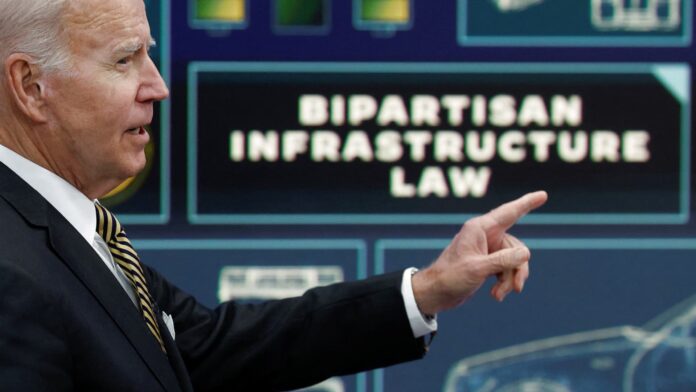The Inflation Reduction Act signed into law last year could create a boost for stocks from various sectors, and Goldman Sachs broke down its top picks for investors wanting to take advantage. “We believe stock-specific implications are quite wide-ranging from both an impact and timing perspective across multiple sectors,” Goldman strategists said in a note. The Wall Street firm screened buy-rated stock ideas — with many having 50% upside — from not only clear-cut winners like clean technology, hydrogen and electric vehicles, but also more underappreciated sectors like energy services and financials. Here are the criteria Goldman looked at for IRA plays: Percentage of sales derived in U.S. Percentage of sales benefiting from IRA IRA impact on earnings per share, EBITDA and free cash flow Goldman noted that the IRA marks a meaningful policy development for the solar and energy storage sector and clears the way for a decadelong runway for stable installation growth. First Solar and Enphase were the two top picks in this space, with Goldman predicting 50% upside in the next 12 months for both names. The bill also gives rise to the clean hydrogen economy in the U.S., including carbon capture, Goldman said. The firm highlighted Linde as a top beneficiary. “For the first time [it] gives hydrogen a strong foundation to play a significant role in the energy system of the country,” the strategists said. “We view these incentives together as a major game changer for the sequestration of carbon and production of hydrogen and are a significant benefit for companies with current or planned hydrogen projects in the U.S.” Electric vehicle players Freyr and Tesla could also be big winners as the law promotes long-term EV adoption while also driving down battery costs, Goldman said. For underappreciated names, Goldman said alternative asset manager Brookfield could be getting a boost as the company is building out its renewables flagship lineup. Meanwhile, Goldman said energy services company MasTec is well positioned to benefit from the demand for infrastructure that supports renewable projects. — CNBC’s Michael Bloom contributed reporting
© heardonwallstreet.com


